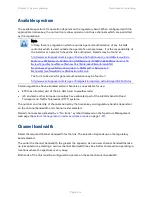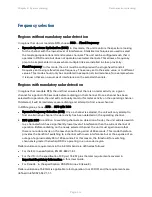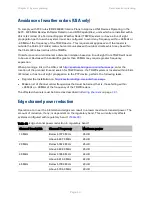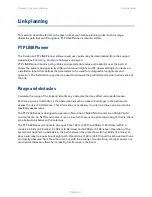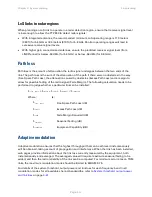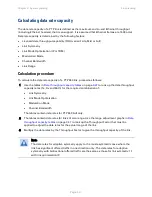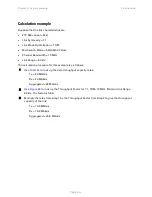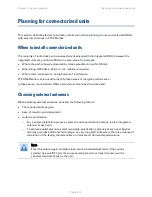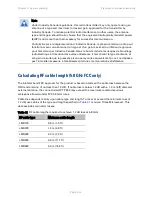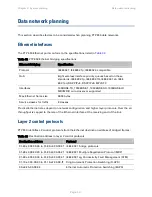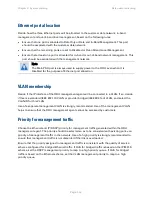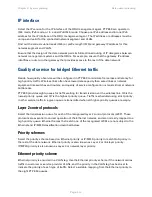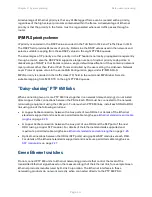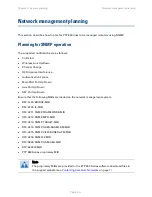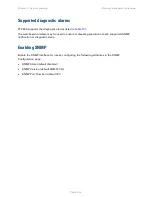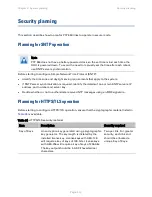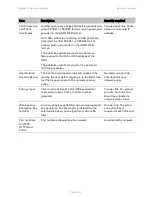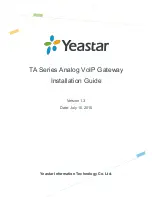
Chapter 3: System planning
Radio spectrum planning
Frequency selection
Regions without mandatory radar detection
In regions that do not mandate DFS, choose DSO or Fixed Frequency:
•
Dynamic Spectrum Optimization (DSO): In this mode, the unit monitors the spectrum looking
for the channel with the lowest level of interference. Statistical techniques are used to select
the most appropriate transmit and receive channels. The unit can be configured such that it
operates in DSO mode, but does not operate on selected channels. This allows a frequency
plan to be implemented in cases where multiple links are installed in close proximity.
•
Fixed Frequency: In this mode, the unit must be configured with a single fixed transmit
frequency and a single fixed receive frequency. These may set to the same value or to different
values. This mode should only be considered in exceptional circumstances, for example where
it is known that are no sources of interference on the selected channels.
Regions with mandatory radar detection
In regions that mandate DFS, the unit first ensures that there is no radar activity on a given
channel for a period of 60 seconds before radiating on that channel. Once a channel has been
selected for operation, the unit will continually monitor for radar activity on the operating channel.
If detected, it will immediately cease radiating and attempt to find a new channel.
In DFS regions, choose DFS or DFS with DSO:
•
Dynamic Frequency Selection (DFS): Once a channel is selected, the unit will only attempt to
find an alternative channel if radar activity has been detected on the operating channel.
•
DFS with DSO: In addition to switching channels on detection of radar, the unit will also switch
to a channel which has a significantly lower level of interference than the current channel of
operation. Before radiating on the newly selected channel, the unit must again ensure that
there is no radar activity on the new channel for a period of 60 seconds. This mode therefore
provides the benefit of switching to a channel with lower interference but at the expense of an
outage of approximately 60 to 120 seconds. For this reason, the threshold for switching
channels is greater than when DSO is operating in a non-radar region.
Radar avoidance requirements in the 5.4 GHz band are defined as follows:
•
For the EU: in specification EN 301-893 V1.6.1.
•
For the US: in the specification FCC part 15.407 plus the later requirements covered in
Important Regulatory Information in this User Guide.
•
For Canada: in the specification RSS210 Annex 9 (Issue 8).
Radar avoidance at 5.8 GHz is applicable to EU operation (not FCC/IC) and the requirements are
defined in EN 302 502 V1.1.1.
Page
3-19














